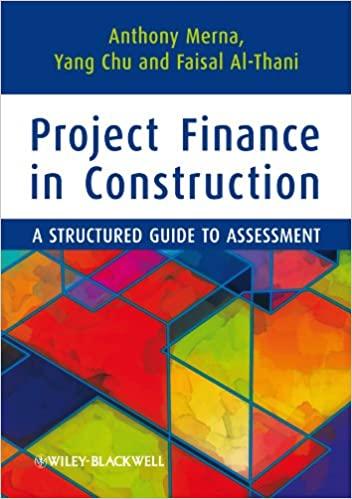Question
1. Find the accounting break-even point given the following information: Price = $50 per unit; variable cost = $35 per unit; annual fixed costs =
1. Find the accounting break-even point given the following information: Price = $50 per unit; variable cost = $35 per unit; annual fixed costs = $50,000; depreciation = $10,000.
2. Find the accounting break-even point given the following information: Total costs = $135,000; variable cost = $10 per unit; sales = 10,000 units; price = $25; depreciation = $10,000.
3. What is the accounting break-even point? Price = $100 per unit; variable cost = $24 per unit; fixed cost = $40,000 per year; depreciation = $10,000 per year. Assume a discount rate of 10%, project initial outlay of $100,000, project life of 10 years, and ignore taxes.
4. What is the cash break-even point? Price = $100 per unit; variable cost = $24 per unit, fixed cost = $40,000 per year; depreciation = $10,000 per year. Assume a discount rate of 10%, project initial outlay of $100,000, project life of 10 years, and ignore taxes.
5. What is the financial break-even point? Price = $100 per unit; variable cost = $24 per unit, fixed cost = $40,000 per year; depreciation = $10,000 per year. Assume a discount rate of 10%, project initial outlay of $100,000, project life of 10 years, and ignore taxes.
6. Given the following information, what is the financial break-even point? Initial investment = $300,000; variable cost = $120; fixed cost = $65,000; price = $150; life = 6 years; required return = 10%; depreciation = $50,000. Ignore taxes.
7. Given the following information, what is the financial break-even point? Initial investment = $300,000; variable cost = $120; fixed cost = $65,000; price = $150; life = 6 years; required return = 10%; depreciation = $50,000; salvage value of assets = $25,000. Ignore taxes.
8. Given the following information, what is the financial break-even point? Initial investment = $300,000; variable cost = $120; fixed cost = $65,000; price = $150; life = 6 years; required return = 10%; depreciation = $50,000; salvage value of assets = $25,000; initial net working capital investment = $10,000.
Step by Step Solution
There are 3 Steps involved in it
Step: 1

Get Instant Access to Expert-Tailored Solutions
See step-by-step solutions with expert insights and AI powered tools for academic success
Step: 2

Step: 3

Ace Your Homework with AI
Get the answers you need in no time with our AI-driven, step-by-step assistance
Get Started


